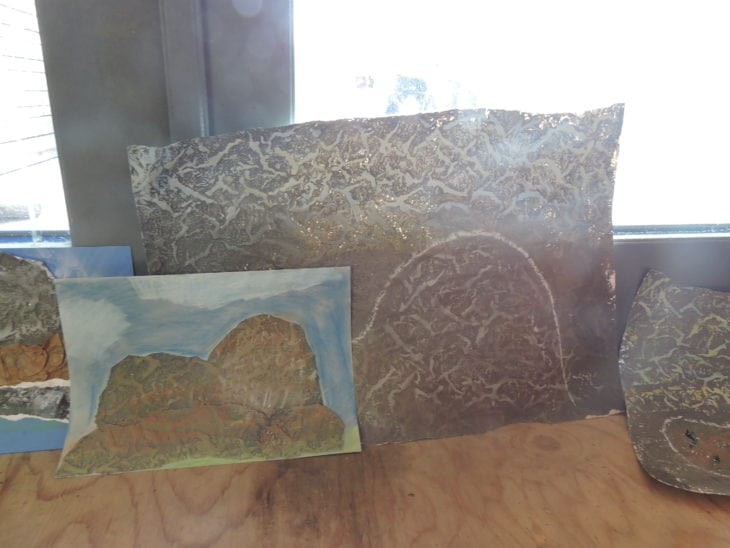Learning The Way!
,
By Katrina Martin, CALLP Education Manager (Job Share)
Ever since I stepped into the role of Education Manager for the Outdoor & Woodland Learning Project I have been excited at the prospect of delivering an Outdoor Learning session themed around paths, especially given the variety of paths and access projects CALLP has. Like many of us, I enjoy going out for walks and accessing beautiful places. Yet until relatively recently I didn’t give a second thought to where I was placing my feet. A growing awareness has cultivated an appreciation for the impressively hard graft and the people involved in path work, which I feel is a valuable thing to share given that most of us find ourselves traversing footpaths at some point or another, and will be increasingly so in Coigach and Assynt! With the imminent completion of the Suilven path work, we were presented with a great opportunity to bring a path-themed Outdoor Learning day to fruition on a collaboration project with John Muir Trust Paths Project Officer, Chris Goodman, and the Assynt Foundation.
For the past couple of months, a group of us have been planning, organising and shaping what such a day could look like, and how to make it as engaging and interesting as possible. At some point during that period, the 25th of September was marked in the calendar in agreement with the schools. And rather faster than expected, this seemingly distant speck in time became today!
Based at Glencanisp, we were joined by seventeen P5s and P6s from Achiltibuie and Lochinver Primary Schools. Along with a pathwork focused workshop, the North West Highlands Geopark put things into context with an opening session introducing the geology of the area and how Suilven came to be, while Lairg-based artist Emma Armstrong guided art sessions on illustrating the natural history and path work on Suilven for the interpretation panels that will be displayed at Glencanisp in the near future.
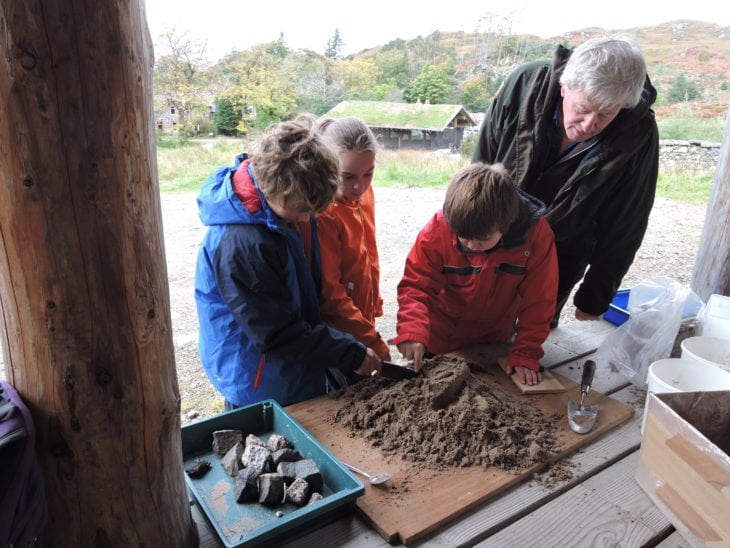
Before launching into the path workshop, we stepped back to discuss what a path is, who uses them and why. Perhaps it’s better to start with the latter first: paths are used because they tend to be quicker and easier, demonstrated today by an aptly emerging track through grass at Glencanisp between the pole barn and art studio that has appeared over time precisely because of that; there’s no point wading through long, wet grass when those before you have already trampled some down! And after several journeys – tada – a path begins to emerge. From this point we discussed how people aren’t the only beings to create and use paths… some of the other animals from our locale include badgers, otters, deer and sheep. This posed the question, why then do we have to maintain people-created paths? We don’t see badgers wielding mattocks or Path Officer deer…
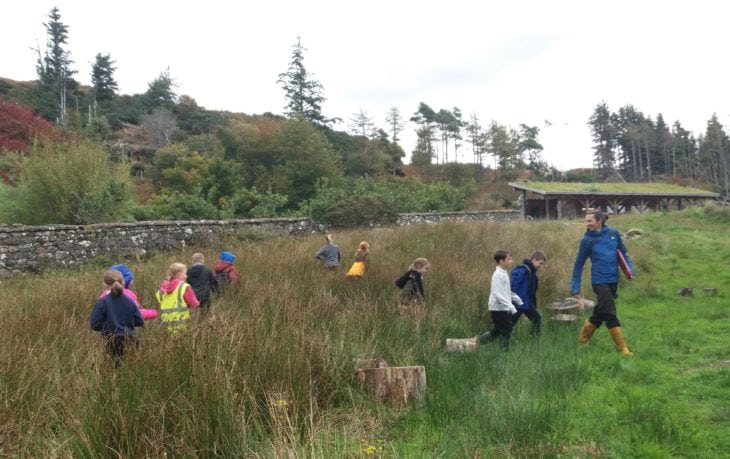
When looking up the number of people compared to other land-dwelling wild mammals for this session, I had to admit defeat. In the top ten lists, people obviously appeared highest, numbering roughly seven billion, but the rest consisted of domesticated mammals (sheep are estimated to be around one billion). Despite not getting wild mammal numbers, it still highlights the point, to an even greater extent, that there are a lot more of us… even compared to sheep. Plus, badgers and deer don’t tend to go on holiday and/or create footfall hotspots in desirable places! I’m sure you get the point; this then is why people-created path maintenance is important.
All of this provided great food for thought and opened us up to an interactive session exploring some of the challenges presented when facing path work, the different kinds of built features that tackle these, the tools and materials used, the hard work required, added to by the task of getting and moving suitable material to and on site. Hands-on learning opportunities were offered throughout to help demonstrate and embed the information being discussed. With Suilven being used as the case study, we looked at before and after photographs that illustrated the change and impact of the works carried out.
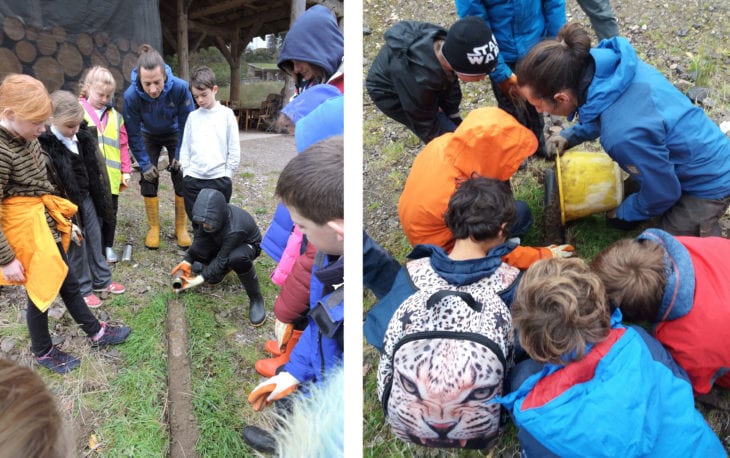
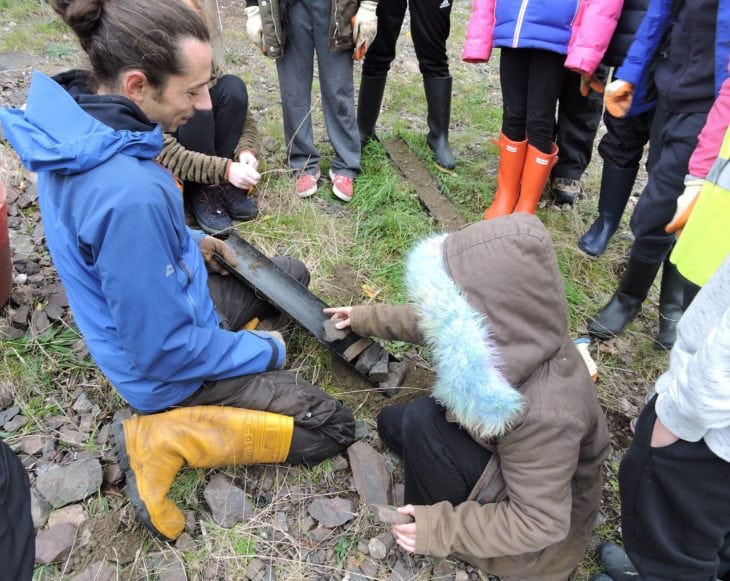
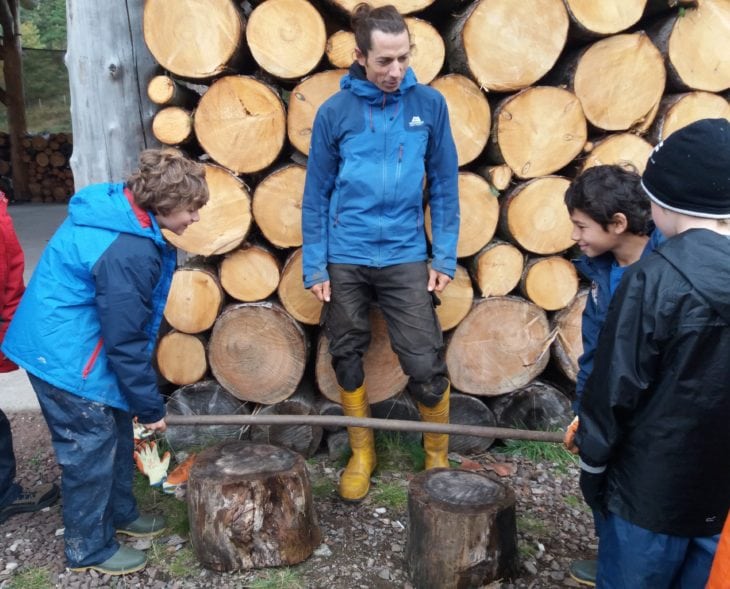
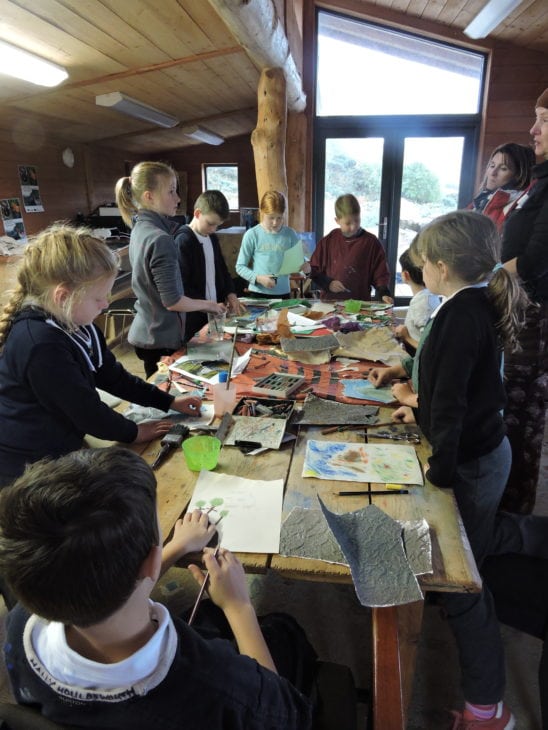
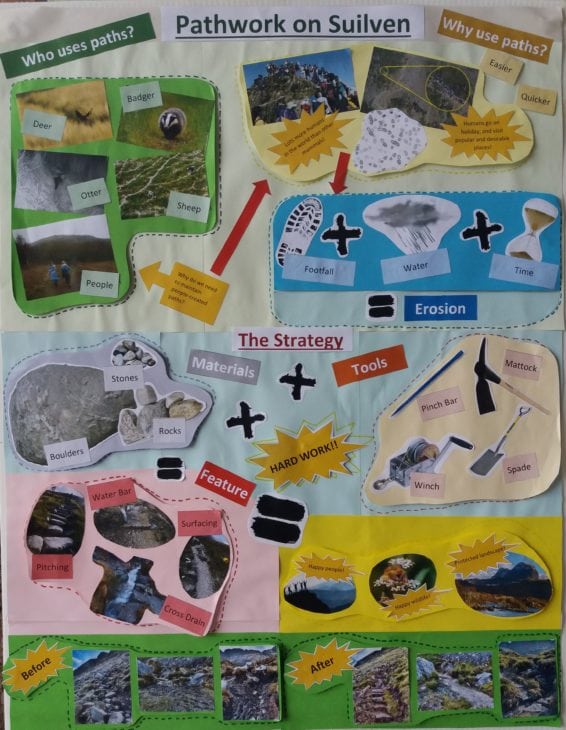
The day closed with a cutting of the ribbon to officially acknowledge the completion of the path. Assynt Foundation directors, members and CALL Partners joined us for a celebratory cup of cordial (locally made from foraged berries and supplied by Glencanisp Lodge), providing the opportunity to see what the P5s-6s had been up to during the day
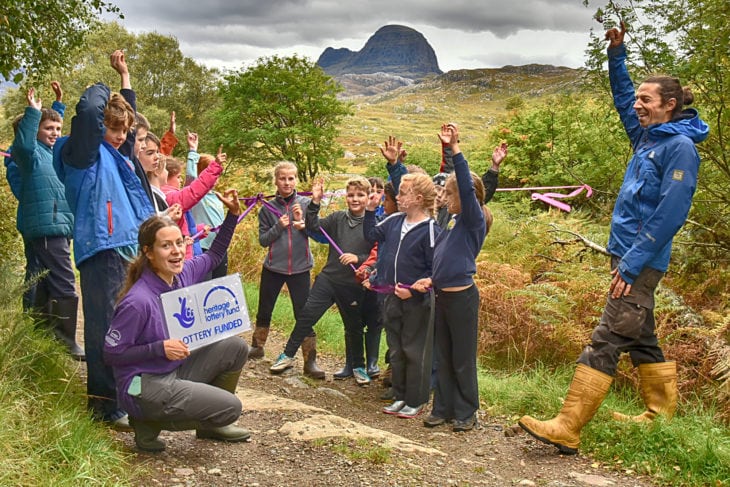
While it would have been great to go up to see the path in all its finished glory, we had to be realistic about our timings and what we could achieve in a four-hour window. We hope today has inspired our younger residents to make the journey to the top of Suilven and go check out the path for themselves (disclaimer: accompanied by a responsible adult!).
